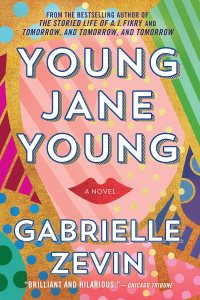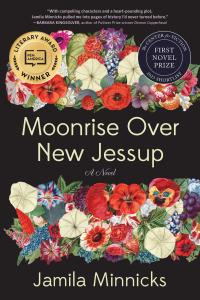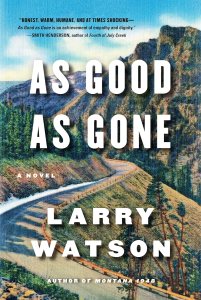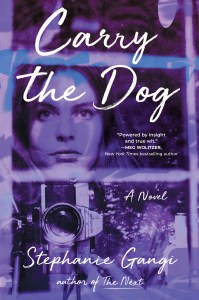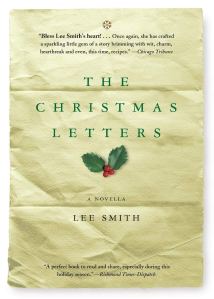Algonquin November E-Book Deals

It’s time to gather great reads for the holidays🍂
These e-books are up to 75% off this month.
“SLY, EXHILARATING . . . HILARIOUS.” —People (Book of the Week)
"BRILLIANT AND HILARIOUS." —Chicago Tribune
This is the story of five women . . .
Meet Rachel Grossman.
She’ll stop at nothing to protect her daughter, Aviva, even if it ends up costing her everything.
Meet Jane Young.
She’s disrupting a quiet life with her daughter, Ruby, to seek political office for the first time.
Meet Ruby Young.
She thinks her mom has a secret. She’s right.
Meet Embeth Levin.
She’s made a career of cleaning up her congressman husband’s messes.
Meet Aviva Grossman.
The Internet won’t let her or anyone else forget her past transgressions.
This is the story of five women . . .
. . . and the sex scandal that binds them together.
From Gabrielle Zevin, the bestselling author of The Storied Life of A. J. Fikry, comes another story with unforgettable characters that is particularly suited to the times we live in now . . .
Winner of the PEN/Bellwether Prize for Socially Engaged Fiction, an enchanting and thought-provoking debut novel about a Black woman doing whatever it takes to protect all she loves on Alabama soil during the Civil Rights Movement.
It’s 1957, and after leaving the only home she has ever known, Alice Young steps off the bus into all-Black New Jessup, where residents have largely rejected integration as the means for Black social advancement. Instead, they seek to maintain, and fortify, the community they cherish on their “side of the woods.” In this place, Alice falls in love with Raymond Campbell, whose clandestine organizing activities challenge New Jessup’s longstanding status quo and could lead to the young couple’s expulsion—or worse—from the home they both hold dear. As they marry and raise children together, Alice must find a way to balance her undying support for his underground work with her desire to protect New Jessup from the rising pressure of upheaval from inside, and outside, their side of town.
Based on the history of the many Black towns and settlements established across the country, Jamila Minnicks's heartfelt and riveting debut is both a celebration of Black joy and a timely examination of the opposing viewpoints that attended desegregation in America.
Longlisted for The Center for Fiction 2023 First Novel Prize
It's 2003,and artist Dawn Levit is stuck. A bookbinder who works at the Metropolitan Museum of Art, she spends all day repairing old books but hasn’t created anything of her own in years. What’s more, although she doesn’t have a word for it yet, Dawn is genderqueer, and with a partner who wishes she were a man and a society that wants her to be a woman, she’s struggling to feel safe expressing herself. Dawn spends her free time scouting the city’s street art, hoping to find the inspiration that will break her artistic block—and time is of the essence, because she’s making her major gallery debut in six weeks and doesn’t have anything to show yet.
One day at work, Dawn discovers something hidden under the endpapers of an old book: the torn-off cover of a lesbian pulp novel from the 1950s, with an illustration of a woman looking into a mirror and seeing a man’s face. Even more intriguing is the queer love letter written on the back. Dawn becomes obsessed with tracking down the author of the letter, convinced the mysterious writer can help her find her place in the world. Her fixation only increases when her best friend, Jae, is injured in a hate crime for which Dawn feels responsible. But ultimately for Dawn, the trickiest puzzle to solve is how she truly wants to live her life.
A sharply written, page-turning, and evocative debut, Endpapers is an unforgettable story about the journey toward authenticity and the hard conversations we owe ourselves in pursuit of a world where no one has to hide.
Calvin Sidey is always ready to run, and it doesn’t take much to set him in motion. As a young man, he ran from this block, from Gladstone, from Montana, from this country. From his family and the family business. He ran from sadness, and he ran from responsibility. If the gossip was true, he ran from the law.
It’s 1963, and Calvin Sidey, one of the last of the old cowboys, has long ago left his family to live a life of self-reliance out on the prairie. He’s been a mostly absentee father and grandfather until his estranged son asks him to stay with his grandchildren, Ann and Will, for a week while he and his wife are away. So Calvin agrees to return to the small town where he once was a mythic figure, to the very home he once abandoned.
But trouble soon comes to the door when a boy’s attentions to seventeen-year-old Ann become increasingly aggressive and a group of reckless kids portend danger for eleven-year-old Will. Calvin knows only one way to solve problems: the Old West way, in which scores are settled and ultimatums are issued and your gun is always loaded. And though he has a powerful effect on those around him–from the widowed neighbor who has fallen under his spell to Ann and Will, who see him as the man who brings a sudden and violent order to their lives–in the changing culture of the 1960s, Calvin isn’t just a relic; he’s a wild card, a danger to himself and those who love him.
In As Good as Gone, Larry Watson captures our longing for the Old West and its heroes, and he challenges our understanding of loyalty and justice. Both tough and tender, it is a stunning achievement.
“I can’t remember the last time I was as completely bewitched by a fictional character as I was by Bea Seger . . . What a treat to view life through the eyes of this funny, smart, gutsy woman.” —Richard Russo, author of Empire Falls and Chances Are…
Bea Seger has spent a lifetime running from her childhood. The daughter of a famous photographer, she and her brothers were the subjects of an explosive series of images in the 1960s known as the Marx Nudes. Disturbing and provocative, the photographs shadowed the family long past the public outcry and media attention. Now, decades later, both the Museum of Modern Art and Hollywood have come calling, eager to cash in on Bea’s mother’s notoriety. Twice divorced from but still entangled with aging rock star Gary Going, Bea lives in Manhattan with her borrowed dog, Dory, and sort-of sister, Echo. After years of avoiding her past, Bea must make a choice: let the world in—and be compensated for the trauma of her childhood—or leave it all locked away in a storage unit forever.
Carry the Dog sweeps readers into Bea’s world as the little girl in the photographs and the woman in the mirror meet at the blurry intersection of memory and truth, vulnerability and resilience.
The climate apocalypse has come and gone, and in the end it wasn't the temperature climbing or the waters rising. It was the trees. They created enough pollen to render the air unbreathable, and the world became overgrown.
In the decades since the event known as the Turning, humanity has rebuilt, and Izabel has grown used to the airtight domes that now contain her life. She raises her young daughter, Cami, and attempts to make peace with her mother's death. She tries hard to be satisfied with this safe, prosperous new world, but instead she just feels stuck.
And then the tranquility of her town is shattered. Someone—a serial killer—starts slashing through the domes at night, exposing people to the deadly pollen. At the same time, Cami begins sleep-talking, having whole conversations about the murders that she doesn't remember after she wakes. Izabel becomes fixated on the killer, on both tracking him down and understanding him. What could compel someone to take so many lives after years dedicated to sheer survival, with society finally flourishing again?
Suspenseful and startling, but also poetic and written with a wry, observant humor, this “skillful blend of postapocalyptic science fiction, supernatural murder mystery, and domestic drama is unexpected and entirely engrossing” (Publishers Weekly).
Here, in a letter of her own, Lee Smith explains how she was inspired to write this celebrated epistolary novel:
Dear Friends,
Like me, you probably get Christmas letters every year. I read every word and save every letter. Because every Christmas letter is the story of a life, and what story can be more interesting than the story of our lives? Often, it is the story of an entire family. But you also have to read between the lines with Christmas letters. Sometimes, what is not said is even more important than what is on the page.
In The Christmas Letters, I have used this familiar format to illumine the lives, hopes, dreams, and disappointments of three generations of American women. Much of the story of The Christmas Letters is also told through shared recipes. As Mary, my favorite character, says, “I feel as if I have written out my life story in recipes! The Cool Whip and mushroom soup years, the hibachi and fondue period, then the quiche and crepes phase, and now it’s these salsa years.”
I wrote this little book for the same reason I write to my friends and relatives every holiday–Christmas letters give us a chance to remember and celebrate who we are.
With warmest greetings, Lee Smith
This classic Christmas story of rekindled spirit is the inspiration behind the 2013 holiday film Angels Sing, starring Harry Connick Jr., Willie Nelson, Kris Kristofferson, and Lyle Lovett.
This is the tale of Michael, who was eight years old on the Christmas Day he lost his brother David. The day had started out well–Michael and David opened their presents, and much to their delight, they had both received ice skates from Santa. With great excitement they set out to the pond behind their grandparents’ house in New Mexico to try them out. But the pond wasn’t safe, and David didn’t make it out of its icy cold depths. For Michael, the meaning of Christmas changed forever that day.
Thirty years later Michael is the neighborhood Grinch. “To me the only wonder of Christmas is not why that tragedy marked me so,” Michael says, “but how the rest of my family can seem so completely unscathed.” He scowls at his neighbors’ fervent holiday traditions and at his own children, who want nothing more than to string Christmas lights through their front yard. But when another holiday disaster strikes and his own cherished young son loses his spirit to live, Michael searches deep within himself to root out the anger, the fear, and the pain of the past. Can he bear to remember exactly what happened that Christmas Day? And will he make peace with this past for the sake of his own children?
